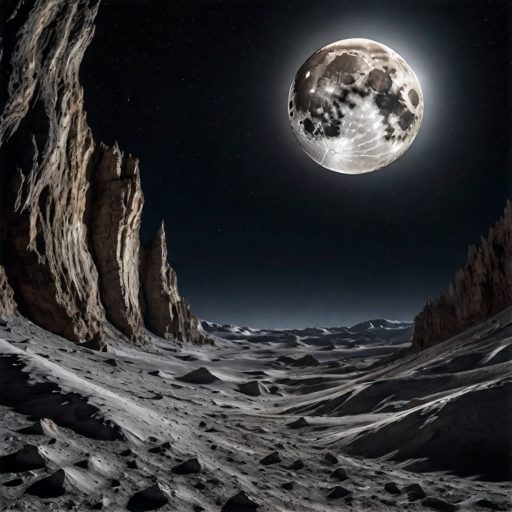
The Moon Shrinking: Concerns Rise Quietly
Recommended for Exploration
The moon, our closest celestial neighbor, has always fascinated humanity with its mysteries and beauty. Yet, a recent study reveals a concerning aspect of the Moon: it is slowly shrinking. This might not be immediately apparent from Earth, but this subtle transformation could have significant implications, especially for future lunar exploration and habitation efforts.
This story delves into the key findings of the study, shedding light on the potential risks and considerations for human activities on the Moon.
Listen to the news
The Moon’s Gradual Contraction
The study, conducted by researchers in the United States, highlights that the Moon is experiencing a gradual decrease in size as it cools down. This process, occurring at a rate of about 45 meters (over 150 feet) every few hundred million years, is not rapid but is nonetheless significant.
The cooling of the Moon leads to tectonic activities, such as landslides and quakes, particularly near the lunar South Pole.
Key Facts and Findings
- The Moon’s getting smaller, folks. Yeah, it’s cooling down and that’s messing with its stability. Think of it like a grape turning into a raisin. This shrinkage? It’s serious business. It could trigger landslides and even moonquakes. That’s right, quakes on the Moon, especially in spots NASA’s got its eye on for future visits.
- Now, let’s talk about lobate scarps. These aren’t just any ridges. They’re the fingerprints of the Moon’s tectonic activities.
- The cool part? We’ve got the evidence. Thanks to the Lunar Reconnaissance Orbiter’s snaps and some nifty data from the Apollo missions’ seismometers, we know these features are stirring up trouble with lunar quakes.
Examples and Implications
Imagine the Moon having earthquakes. Well, it kind of does! Scientists recently found out about one of the strongest ones ever recorded, like a giant shake with a power of 5 on the earthquake scale. It lasted for hours! They think it happened because of something called a “lobate scarp” near the Moon’s South Pole.
This is a big deal because it shows that the Moon’s surface can shake and even slide around, especially in places where there are lots of loose rocks. This is important because if we want to build stuff or land spaceships on the Moon, we need to know which areas are safe and which ones might be risky.
Lunar Safety Essentials
Reflection
The Moon’s slow shrinkage is more than just a fascinating aspect of lunar science; it represents a critical factor in planning future exploration and habitation. As we stand on the brink of returning humans to the Moon and possibly establishing permanent bases, understanding the Moon’s geological behavior becomes paramount.
The insights provided by this study not only inform us about the Moon’s past but also guide us in making informed decisions for safe and sustainable lunar exploration in the future.
The journey to the Moon is not just about reaching another celestial body; it’s about overcoming the challenges it presents, and this research brings us one step closer to that goal.
Similar Stories
Curious Times is a leading newspaper and website for kids. We publish daily global news aligned to your learning levels (also as per NEP 2020): Foundational, Preparatory (Primary), Middle and Senior. So, check out the News tab for this. We bring kids’ favourite Curious Times Weekly newspaper every weekend with top news, feature stories and kids’ contributions.
ME – My Expressions at Curious Times is your place to get your work published, building your quality digital footprint. And it is a good way to share your talent and skills with your friends, family, school, teachers and the world. Thus, as you will step into higher educational institutes your published content will showcase your strength.
Communicate with us: Instagram.
0 (Please login to give a Curious Clap to your friend.)
